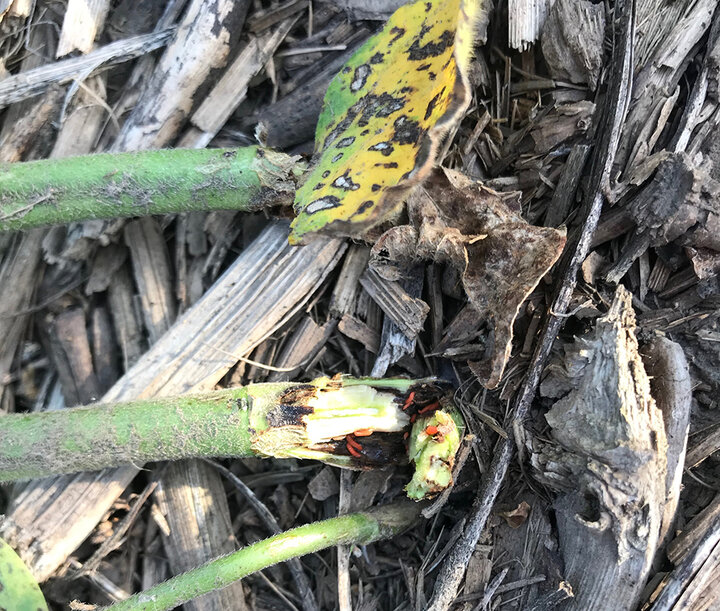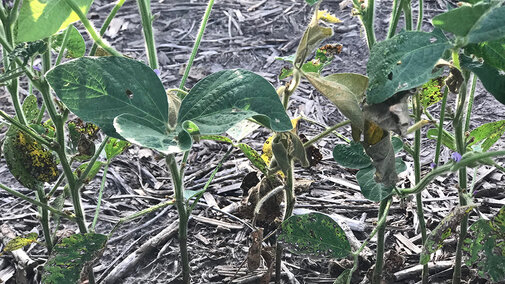Adult Emergence of Soybean Gall Midge
Since June 30, low levels of adult emergence have been observed from east-central and northeast Nebraska counties from last year’s soybean fields. On July 2 and July 4 single adult soybean gall midges were collected from two fields in east-central Nebraska planted to soybeans this year, signaling the start of the second generation of soybean gall midge.
Many of you might be wondering about the potential injury that second generation might cause to this year’s soybean fields. As of now, the potential injury that second generation can cause to soybean is unclear, but we assume it would be less than that from the first generation. Given the longer-than-anticipated emergence of adults of the first generation, it is unlikely that insecticides would significantly impact gall midges, resulting in little economic return from the pesticide application.
Application of insecticides may be warranted for late-planted soybeans (after June 1) in fields adjacent to areas with significant gall midge issues in 2018. As indicated in a previous CropWatch article, soybean plants at the V2 stage or less appear to be free of soybean gall midge infestation.
Nebraska Counties with Soybean Gall Midge Infestation
Nebraska Extension Educators Aaron Nygren and Megan Taylor identified soybean gall midge infestation in two new counties this past week: Nance and Butler (Figure 2). Ag professionals should continue to scout fields for soybean gall midge infestations over the coming weeks. Contact your local extension educator or these extension and research specialists, Justin McMechan (justin.mcmechan@unl.edu), Tom Hunt (thunt2@unl.edu) or Robert Wright (rwright2@unl.edu) if you find soybean gall midge in a new county. Signs of soybean gall midge infestation will become more apparent in the coming weeks as plants begin to shows signs of wilting (Figure 1) from larvae feeding within the base of the stem (Figure 3). These plants will eventually die with the greatest concentration of plant injury occurring at the field edge. To scout for soybean gall midge, focus on plants that are close to the field edge and adjacent to fields that were planted to soybean in 2018.



